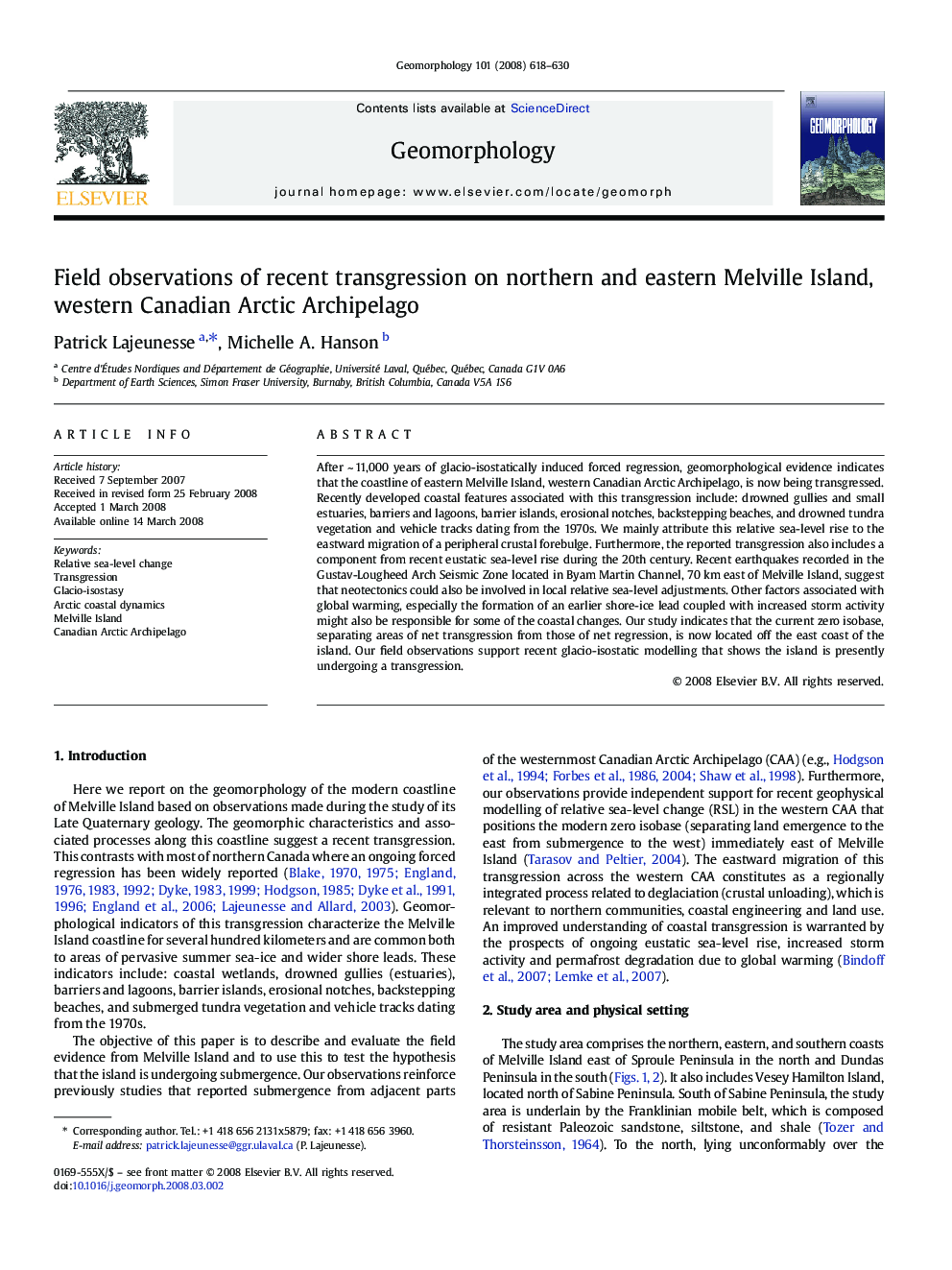| Article ID | Journal | Published Year | Pages | File Type |
|---|---|---|---|---|
| 4686582 | Geomorphology | 2008 | 13 Pages |
After ~ 11,000 years of glacio-isostatically induced forced regression, geomorphological evidence indicates that the coastline of eastern Melville Island, western Canadian Arctic Archipelago, is now being transgressed. Recently developed coastal features associated with this transgression include: drowned gullies and small estuaries, barriers and lagoons, barrier islands, erosional notches, backstepping beaches, and drowned tundra vegetation and vehicle tracks dating from the 1970s. We mainly attribute this relative sea-level rise to the eastward migration of a peripheral crustal forebulge. Furthermore, the reported transgression also includes a component from recent eustatic sea-level rise during the 20th century. Recent earthquakes recorded in the Gustav-Lougheed Arch Seismic Zone located in Byam Martin Channel, 70 km east of Melville Island, suggest that neotectonics could also be involved in local relative sea-level adjustments. Other factors associated with global warming, especially the formation of an earlier shore-ice lead coupled with increased storm activity might also be responsible for some of the coastal changes. Our study indicates that the current zero isobase, separating areas of net transgression from those of net regression, is now located off the east coast of the island. Our field observations support recent glacio-isostatic modelling that shows the island is presently undergoing a transgression.
